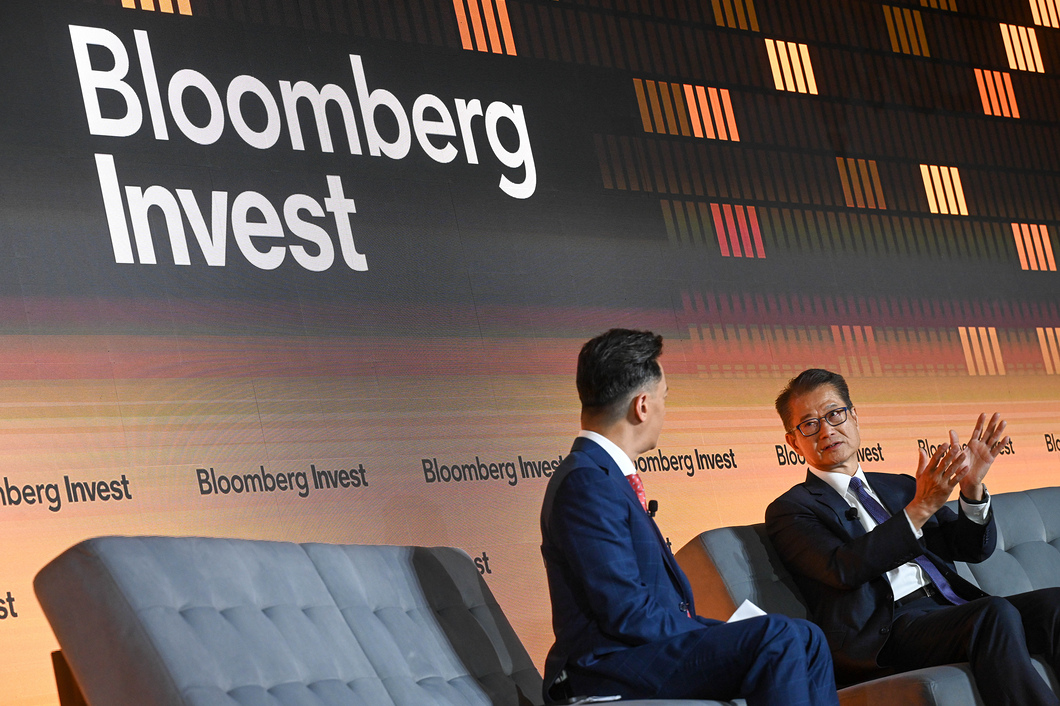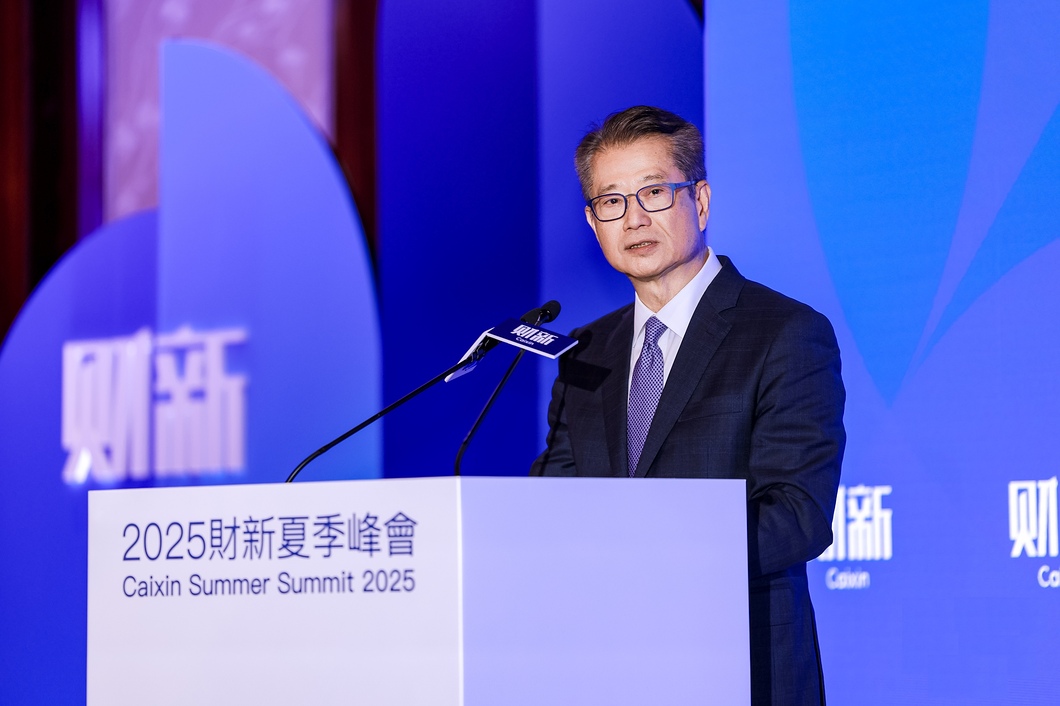Blog
Charging Forward Steadily
This year, despite continued global uncertainties and increasing unforeseen circumstances, the sentiment about Hong Kong's stock market has steadily improved. Building on last year's momentum, the Hang Seng Index has risen by more than 3,800 points this year, an increase of about 20% compared to the end of 2024. It is among the top performers of major global indices. As of May this year, the average daily turnover of the stock market has grown about 1.2 times year-on-year to HK$242 billion. Additionally, IPO fundraising this year has reached nearly HK$79 billion, placing Hong Kong in a leading position among major global exchanges. Meanwhile, follow-on fundraising has exceeded HK$150 billion. There are notable enhancements to both the depth and breadth of Hong Kong's stock market. It is worth noting that many cornerstone investors in large IPOs hail from regions such as Europe, the US, the Middle East and other parts of Asia. Global investors are increasingly allocating funds to Hong Kong stocks. Moreover, bank deposits have continued to rise, and interbank rates remain low. These developments underscore the strengthening confidence of international investors in Hong Kong's financial markets.

|
| Last week, I attended the Bloomberg Invest Forum to share updates on Hong Kong's latest economic and financial developments, as well as key areas of focus for future growth. |
Hong Kong's asset and wealth management sector has also witnessed steady growth. As at the end of March this year, the number of registered funds in Hong Kong reached 976, with a net inflow of over US$44 billion over the year, representing a 285% year-on-year increase. It is expected that within the next 2 to 3 years, Hong Kong will become the world's largest cross-boundary wealth management hub. With the continued growth of financial markets, the number of individuals and firms joining the financial industry is also on the rise. This year to date, there has been a double-digit increase in the number of individuals and institutions applying for licences under the Securities and Futures Ordinance, as compared to the same period last year.
Beyond traditional areas such as the stock market and asset management, Hong Kong has made significant strides in digital finance, green finance and the offshore RMB market. Product innovation is an effective way to create market demand, increase market liquidity and accelerate industry transformation. Since the publication of our first policy statement on the development of the digital asset market at the end of 2022, the relevant sector in Hong Kong has grown significantly. Many enterprises in the field have established or expanded their presence in Hong Kong. To date, 10 virtual asset trading platforms have been licensed, and the Securities and Futures Commission is currently processing 8 more licence applications. We are also advancing regulatory arrangements for custody and over-the-counter trading.
The development of digital assets has also spurred related business activities for financial institutions. For example, last year, local banks facilitated total digital asset and related product transactions worth HK$17.2 billion, while the total value of digital assets under bank custody reached HK$5.1 billion by the end of last year.
In response to the latest developments and evolving circumstances, we are about to issue a second policy statement on digital asset development in Hong Kong. It will outline our visions and next steps, including measures to better integrate the advantages of traditional financial services with the technological innovations of digital assets, enhance the security and flexibility of digital assets in real economic activities, and encourage local and international enterprises to explore innovation and applications in digital asset technologies.

|
| Last week, I spoke at the Caixin Summer Summit 2025. |
The Stablecoin Ordinance has recently been passed by the Legislative Council and will come into effect on August 1. The Ordinance establishes a licensing regime for fiat-referenced stablecoin ("FRS") issuers, and has become a focal point of market interest lately. The global market capitalisation of stablecoins is estimated to be approximately US$240 billion, with the total transaction volume for last year exceeding US$20 trillion. As the digital asset market continues to flourish, the demand for stablecoins is expected to grow further.
Stablecoins are digital assets which are "pegged" to the value of fiat currencies or linked to specific assets to maintain price stability. In particular, by combining the security and efficiency of blockchain technology with the stability of fiat currencies, FRS holds great potential as a tool for integrating the financial system with the real economy, thereby reducing costs and enhancing efficiency. Stablecoins can also serve as a medium of exchange unencumbered by conventional payment timeframes or geographical constraints. Additionally, their programmability features can enable various innovative solutions to automate and streamline financial services. As a result, stablecoins have garnered considerable interest from various market participants. Upon the implementation of the Ordinance, the Hong Kong Monetary Authority will promptly process licence applications to facilitate qualified applicants to commence their operations, with a view to bringing new opportunities to Hong Kong's economy and financial services sector.
Hong Kong is charting a prudent course in stablecoin development, providing a new paradigm for the global stablecoin market, while harnessing its "firewall" and "testing ground" functions under the "one country, two systems" framework to contribute experience and insights to the country's financial development. A notable aspect is the adoption of a more open model, allowing licensed issuers to peg their stablecoins to different fiat currencies for the purpose of stablecoin issuance. This approach is conducive to attracting a diverse array of institutions from around the world to issue stablecoins in Hong Kong driven by real-world use cases. This will significantly enhance liquidity and the competitiveness of the Hong Kong market.
In addition to complying with a range of requirements related to risk management and anti-money laundering, issuers are also required to propose concrete and practical business use cases for their stablecoin, demonstrating how it can effectively address specific pain points in economic activities, thereby bridging financial innovation and the real economy, and promoting the sustainable growth and development of the industry.
In this era of challenges and opportunities, we must capture the opportunities, and enhance Hong Kong's competitiveness and improve the local business environment. Over the past year, with the joint efforts of the HKSAR Government and various sectors of society, Hong Kong has done well in international rankings, including competitiveness, economic freedom as well as status as a financial centre. International rating agencies have given Hong Kong positive ratings, and surveys by foreign chambers of commerce in Hong Kong show continued optimism about Hong Kong's development prospects. These reflect widespread and objective recognition of Hong Kong's progress. We must continue to work hard, while telling the good stories of Hong Kong and China, both domestically and internationally. With these efforts, we will gain even broader recognition, and I firmly believe that more positive commentaries will follow.
Finally, today is Father's Day. How challenging it is to be a father! I wish you all relaxing and joyful moments with your family and loved ones.
June 15, 2025